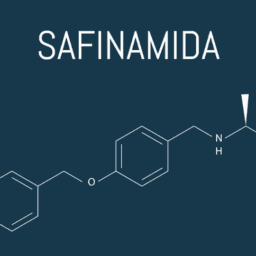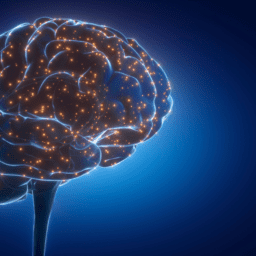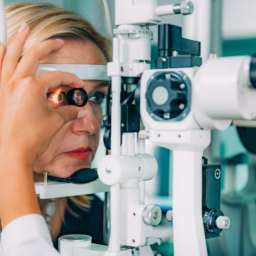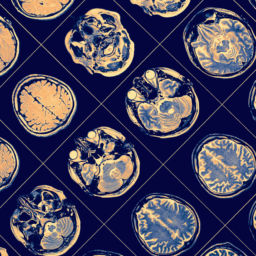At present, no lab test can establish whether a person has Parkinson’s. Instead, care providers diagnose Parkinson’s based on clinical observation of symptoms and personal history. This can be difficult, especially in the early stages of Parkinson’s. Not only are symptoms sometimes mild, but they may also appear inconsistently. Moreover, some other conditions, like essential tremor, have symptoms that can be hard to distinguish from Parkinson’s symptoms. To help with diagnosis when clinical signs are unclear, a care provider might recommend a DaTscan.
What is a DaTscan?
The term DaTscan is frequently used to refer to two closely related things. First, DaTscan is a name for an injectable drug, also known as Ioflupane I 123, that attaches to Dopamine Transporter (DAT) in the brain. The term DaTscan is also used to refer to an imaging exam in which this drug is used to highlight where DAT activity occurs in the brain.
A DaTscan is a nuclear medicine imaging procedure. An x-ray produces images using radiation outside your body to create images of dense interior structures. Nuclear medicine procedures capture images of radiation that comes from inside your body. This is to show how a body system is functioning. To do this, nuclear medicine uses substances with low levels of radioactivity—in this case Ioflupane I 123—to trace the activity of a functional element in the body—in this case, DAT.
How DaTscans Work and What You Can Learn from Them
DAT is a protein that helps move dopamine around the spaces between cells and into neurons. A DaTscan uses SPECT (Single Photon Emission Computed Tomography) imaging to show how much DAT activity is happening around your striatum, a part of the brain affected by Parkinson’s. If the DaTscan image indicates the diminished activity of DAT, this implies that there is a diminished level of dopamine.
In addition to looking at the amount of DAT, the person evaluating the DaTscan also examines the pattern of where DAT is prevalent around the striatum. For a person without Parkinson’s, their DaTscan will show DAT appearing evenly around the striatum and the pattern will look like two commas. However, in scans of people with Parkinson’s, the pattern of DAT around the striatum often looks more like a period on one side.
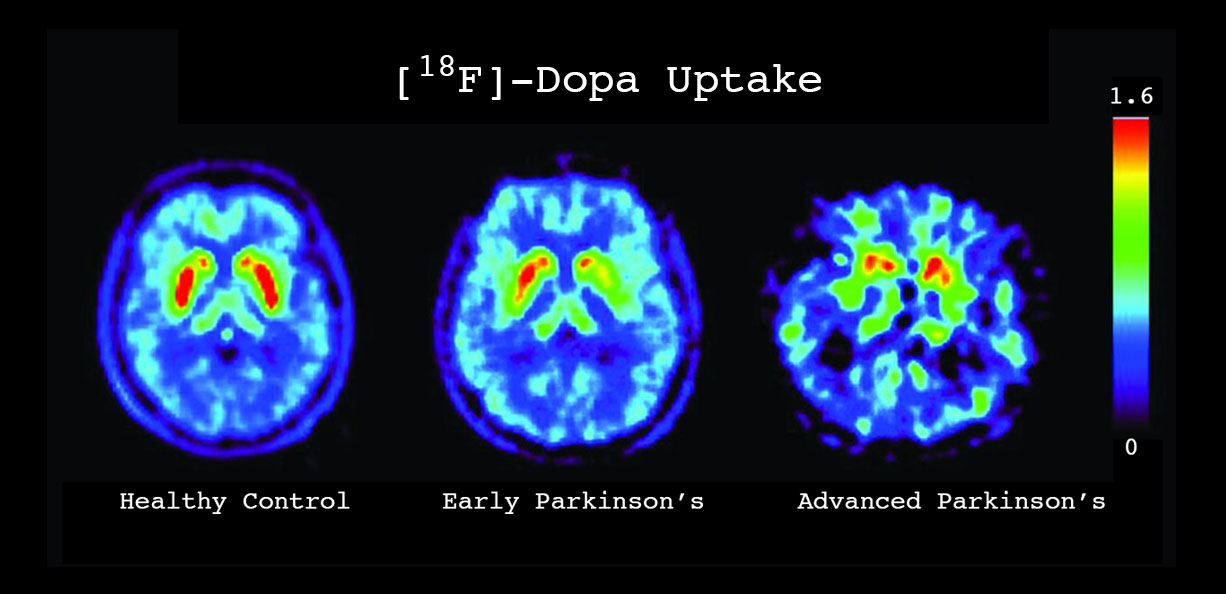
Image via The Parkinson’s Research Organization.
Your Experience During and After a DaTscan
When you arrive for your DaTscan appointment, you’ll be given iodine to help protect your thyroid from absorbing radiation from the DaTscan medication. The iodine may be in liquid or pill form. Then, after 30-60 minutes, you’ll receive an injection of the medication.
To allow the medication to make its way to your brain, you will wait for three to six hours. The office staff will be able to give you a more precise estimate of how long you’ll have to wait during scheduling. You may be able to leave the facility while you wait.
The scan itself will last approximately 40 minutes. During the scan, you’ll be on your back with your head resting in a small cradle. You’ll be asked to remain still. The person performing the scan may use a flexible restraint to help you keep your head still. A part of the imaging machine will rotate slowly around your head during the scan. The rotating part of the machine will come close to your head, but the rest of your body will likely not be surrounded by the machine.
After a DaTscan, you may have side effects such as soreness at the injection site, a headache, or dry mouth, but these side effects are generally mild, and they generally diminish as your body processes the DaTscan medication. To help your body process the medication, drink plenty of water.
Safety
The FDA’s prescribing information for DaTscan reports no serious adverse events in the DaTscan clinical trial process, and an analysis of safety data performed in 2014, thirteen years after the first DaTscan was performed, found that most adverse events were mild.
The radiation level from a standard dose of DaTscan/Ioflupane I 123 is lower than the radiation level from a CT scan and is roughly equivalent to the amount of non-medication radiation exposure a person in the United States experiences in a year.
Differential Diagnoses
A DaTscan can help a provider differentiate between essential tremor and Parkinson’s, because in essential tremor there is no loss of dopamine, so the DaTscan image will be normal. A DaTscan cannot, however, help differentiate between some types of atypical Parkinsonism like Progressive Supranuclear Palsy, Multiple System Atrophy, and Corticobasal Degeneration.
Qualitative Tests, Quantitative Tests, and DaTQUANT
The DaTscan is a qualitative test, not a quantitative test. This means that a scan can help a care provider determine if it is consistent with a Parkinson’s diagnosis. A DaTscan cannot, at present, help quantify how advanced your Parkinson’s is or help form a prognosis regarding symptom progression.
A DaTscan can, however, be semi-quantitatively analyzed when it is performed in a clinic that uses software called DaTQUANT. This software determines how much your scan varies from a normal scan. The software then assigns a number value to indicate this variance. DaTQUANT can provide additional assistance in diagnosing Parkinson’s because the more a DaTscan varies from a normal DaTscan, the more likely the results are consistent with a diagnosis of Parkinson’s.
Nevertheless, as more DaTscans are performed and observational studies like the Parkinson’s Progression Markers Initiative gather more information, some researchers are beginning to find correlations between DaTscan images and the particular symptoms a person experiences. Further research is required, but these correlations may make DaTscan results more useful in the future.
Should You Have A DaTscan?
It is important to remember that outside of a clinical trial setting, a DaTscan’s only approved use in Parkinson’s is to help a care provider establish a diagnosis. You should also note that a normal DaTscan result does not conclusively determine that you do not have Parkinson’s, and it does not mean that you will not develop Parkinson’s in the future. Nevertheless, because it can help increase certainty regarding a Parkinson’s diagnosis, you may find the procedure valuable.
Another important consideration is safety. While a DaTscan is widely considered a safe procedure, it is not without risks. If you have concerns about safety or other aspects of the procedure, talk with your care provider about why they think a DaTscan may be particularly helpful and consider asking if a second clinical opinion would be a reasonable alternative.
More Information
SPECT scan overview- Mayo Clinic
DaTscan Interpretation–gehealthcare.com
DaTscan Mechanism of Action–YouTube
WANT MORE PRACTICAL ARTICLES LIKE THIS?
You can learn much more about living well with Parkinson’s today through our Every Victory Counts® suite of resources. Each manual is packed with up-to-date information about everything Parkinson’s. Click the link below to reserve your manual(s).
Thank you to our 2023 Peak Partners, Amneal, Kyowa Kirin, and Sunovion, and our Every Victory Counts Gold Sponsor, AbbVie Grants, for their ongoing support of these must-have manuals. Additionally, we’d like to thank Barbara and Dale Ankenman, Abby and Ken Dawkins, Bonnie Gibbons, Gail Gitin in loving memory of Gene Gitin, Irwin Narter, and Lorraine and J Wilson for their generous donations that allow us to make these resources available and free to all.





